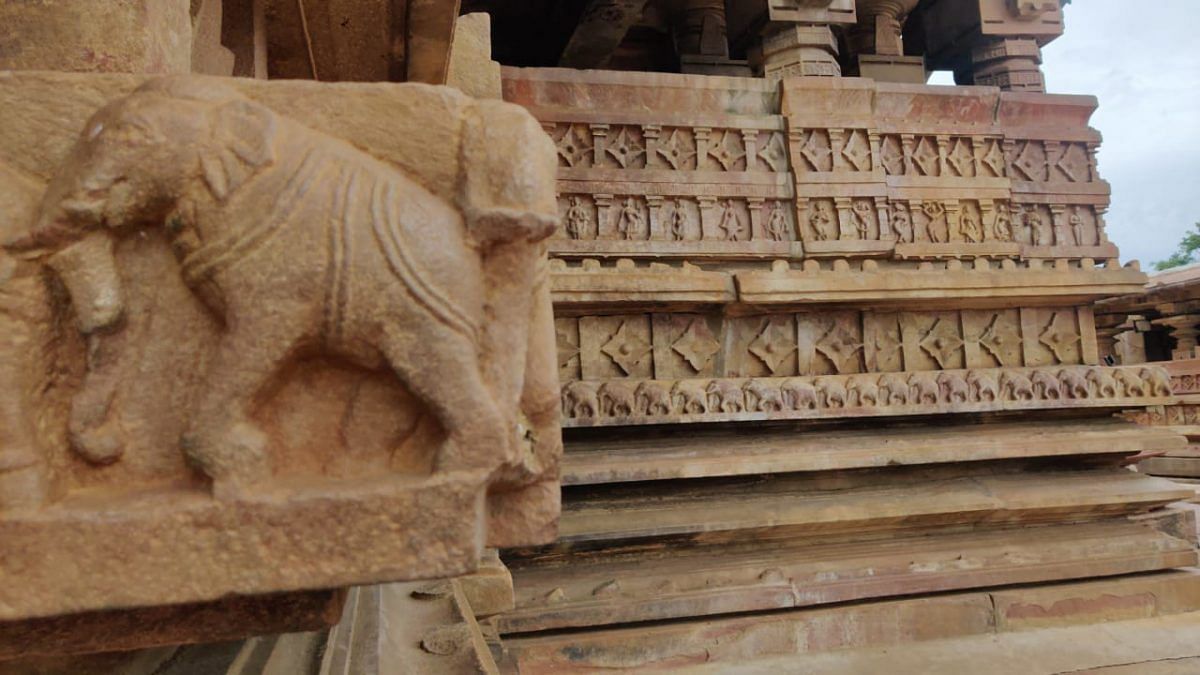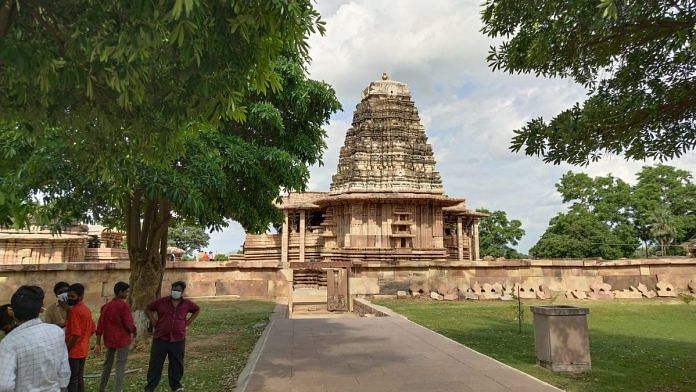Palampet: It’s not just the exquisite craftsmanship that adorns the Kakatiya Rudreswara Temple, also known as the Ramappa temple, that makes it an architectural marvel.
Experts have been puzzled at the “engineering skill” behind the construction of the 13th-century temple, which has been intact for nearly 800 years.
Last week, the temple, tucked away at Palampet in the hinterlands of Telangana, was inscribed as a UNESCO World Heritage Site, the 39th in India. It is the first and only monument from Andhra Pradesh and Telangana to make it to the list.
Monuments that make it to the list, according to UNESCO, need to have an “outstanding universal value”.
They must meet at least one of the 10 selection criteria, some of which include representing a masterpiece of human creative genius and exhibiting an important interchange of human values over a span of time or within a cultural area of the world.
According to Prof Pandu Ranga Rao of the Kakatiya Heritage Trust, what really sets the temple apart is its ‘floating bricks’ that were used to build the ‘Shikara’ roof of the temple.
Rao, a retired professor of the National Institute of Technology (NIT) in Warangal, said the bricks are so light that they can float on water. The density of the bricks is between 0.85 to 0.9 grams per cubic centimetre, whereas the density of water is 1 g/cc. Any usual brick has a density around 2.2 g/cc, he added.
The bricks were made of clay mixed with acacia wood, chaff, and myrobalan (a tree), making it sponge-like and allowing it to float on water.
No other monument, at least in India, has the history of such floating bricks, Rao said, adding that they are one of the reasons for the temple’s longevity, as their weight or lack of it meant that there was little pressure on the foundation.
Another key feature that highlights the geotechnical aspects of the temple is its ‘sandbox technology’, which has helped it sustain despite being in a seismic zone, Rao said.

According to him, the entire temple has been built using this technology wherein a certain area is dug up, filled with sand, and then the structure is constructed on top of it.
Structures built on these ‘sandboxes’ have a robust foundation as the seismic waves generated due to earthquakes are absorbed by the sand, Rao added.
According to him, the temple survived earthquakes in the 17th and 18th centuries even as the houses around it collapsed. The temple’s pillars have sunk into the ground but despite this, the structure remains intact.
A 10-year struggle for heritage status
The Ramappa temple is named after its sculptor Ramappa. Constructed in 1213 AD under the Kakatiya dynasty, it took almost 40 years to be completed.
The temple was built during the rule of the Kakatiya king Gajapati Deva under the supervision of Recherla Rudra Reddy, who was the chief of the Kakatiya army.
In 2009, Rao and B.V. Papa Rao, a retired civil servant of the Assam cadre, set up the Kakatiya Heritage Trust to secure the heritage tag. They were joined by conservation architect G. Suryanarayana Murthy, who played a key role in preparing the dossier that was sent to the International Council on Monuments and Sites (ICOMOS), the Paris-headquartered organisation that offers advice to UNESCO on World Heritage sites.
The trio was among the crucial crusaders behind the heritage tag, who worked with government agencies.
Ranga Rao had in fact provided a live demonstration of the floating bricks to the ICOMOS in Paris in 2019.
It was his research back in the 1980s, along with a group of professors at the civil engineering department of the then Regional Engineering College (now National Institute of Technology), Warangal, that stumbled upon the bricks.
The temple had made it to the tentative UNESCO list in 2016, meaning the nomination was considered on a temporary basis.
An ICOMOS expert team headed by Vasu Poshyanandana, (a stone expert from Thailand) had visited the temple in 2019.
“We did not just present the cultural aspect of the temple (to ICOMOS) but also pitched the geotechnical aspect of it — that how smart one should be in the 13th century to think of such advanced concepts. It is unimaginable,” Murthy told ThePrint.
But securing the tag hasn’t been without its hiccups. According to a report in The Hindu, the ICOMOS had cited nine shortcomings at the site. This led Norway to oppose the inscription of the temple, at the World Heritage Committee (WHC) in Fuzhou, China, on 25 July, before Russia got 17 other countries to back India’s efforts to secure the coveted tag for the temple.
Also read: Why power of padayatra is fading in Telugu politics from YSR’s days of ‘charm & showmanship’
Obscure Palampet village grapples with world heritage site tag
For the 2,000-odd people (according to the 2011 census) of the tiny Palampet village, which hosts this remarkable structure, there’s the excitement that their village and the temple have achieved ‘world-class’ recognition.
“All we know is that this temple has got some world-level recognition for its art and architecture. Would this mean there are better days ahead for us, will more people come now?” asked Girija, who runs a local shop at the entrance of the temple. “We are already seeing a lot of people over the last few days. Never seen so many cars here.”
Among the slew of visitors to the temple in recent days have been Telangana ministers and legislators. A police outpost has also been set up near the temple.
Mulugu district, under which Palampet falls, is one of the backward districts in Telangana and among the least populated.
It was formed in February 2019 as part of the districts’ bifurcation in the state. The district, with a majority tribal population, has about nine mandals, each of which has a prominent tourist attraction.
Palampur is about 60 km from Warangal, which was the capital of the Kakatiya dynasty.
The tag is expected to boost tourism in the region. Before the pandemic, the temple had average weekly visitors of 1,000 people and about 4,000 over the weekend, the temple’s executive officer told ThePrint.
This is now expected to increase by at least eight times, including national and international tourists, the temple officer added.
One of the key attractions in the temple is a basalt pillar that has about 204 lines (in Telugu and Kannada scripts) engraved on the four sides of it, narrating the history of the temple and its rulers.
One of the pillars has such fine, intricate carvings that a thread can be passed through them.
On the outer walls of the temple, 526 elephants have been carved — each one closely attached and entirely different to the other — showing the way to the temple. There are also Persian and Egyptian inscriptions on the walls.
There are at least two other smaller temples inside the premises — one of which has been completely damaged. But the ASI and the heritage trust are in talks to rebuild it.
With a heritage site of such magnitude in a tiny village, Rao says that they’re already working on conservation plans for the temple for decades to come.
A Palampet Special Development Authority will be constituted to streamline the administration and look after the temple’s maintenance.
(Edited by Arun Prashanth)
Also read: How Congress became irrelevant in Andhra Pradesh in a span of just 7 years



